Sage The Bambino Plus review: brilliant espresso machine means making great coffee is now simple
Sage The Bambino Plus makes barista-style espressos, lattes and cappuccinos, just like that

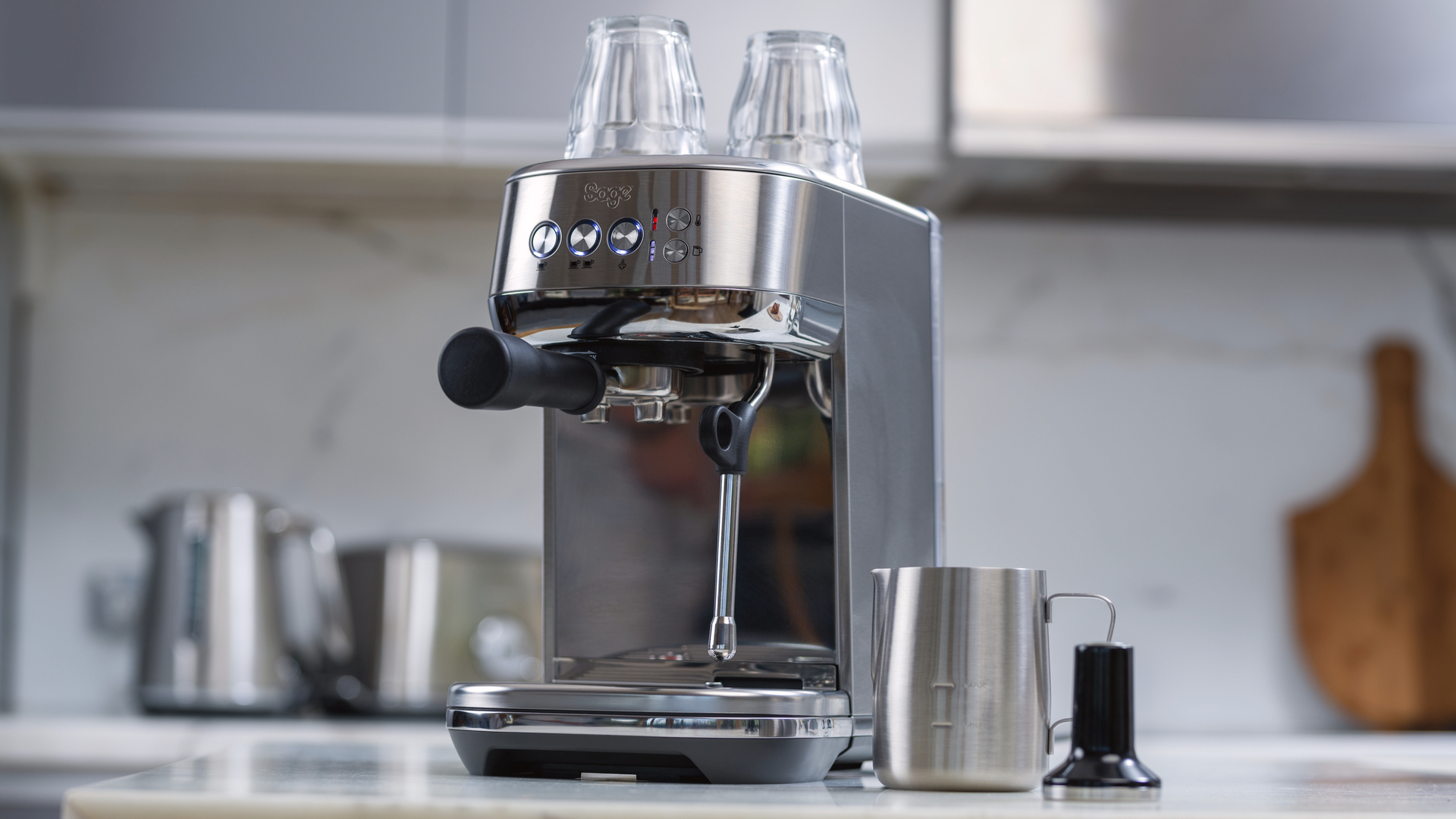
The chic à la mode Sage The Bambino Plus – yes they do drop that 'The' in there – is impressively simple to use and produces some of the best espressos and cappuccinos this side of Rome. It’s also one of the most handsome lookers in the coffee kingdom
-
+
Easy to use
-
+
Makes espressos that punch
-
+
Superb milk steamer
-
+
Elegant looks
-
+
Large water tank
-
-
Feels a little light in weight
-
-
…And not so light in price
Why you can trust T3

Sage The Bambino Plus is an espresso machine that makes coffee in a hurry and with minimum fuss. So here's our Sage The Bambino Plus review in a hurry and with no fuss: if you're looking for an exceptional espresso machine – not bean to cup –that delivers barista-style shots on a consistent basis, look no further.
This small-bodied worktop warrior is clearly pitched as a rival to the Gaggia Classic. It beats even that old stalwart by producing espressos that knock the socks off – and with almost zero faff in the process – and then adds a superior steam wand to do the same for textured milk, for your lattes and cappuccinos.
This little beauty isn’t hogging the #1 spot in our guide to the best espresso machines for nothing. Read on to find out more…
- Best Manual espresso machine
- Best Nespresso machine
- Best coffee capsule machine
- Best pour over coffee maker
Sage The Bambino Plus review: price and availability
Sage The Bambino Plus is available worldwide, but outside of Europe and the Middle East it is called Breville Bambino Plus. Don't ask me why. The best price of this fine item near you can be seen in our pricing widgets, but the recommended price is £399 in the UK, $399 in the USA and AU$599 in Australia – the land down under, where women glow and men chunder.
Sage The Bambino Plus review: Design
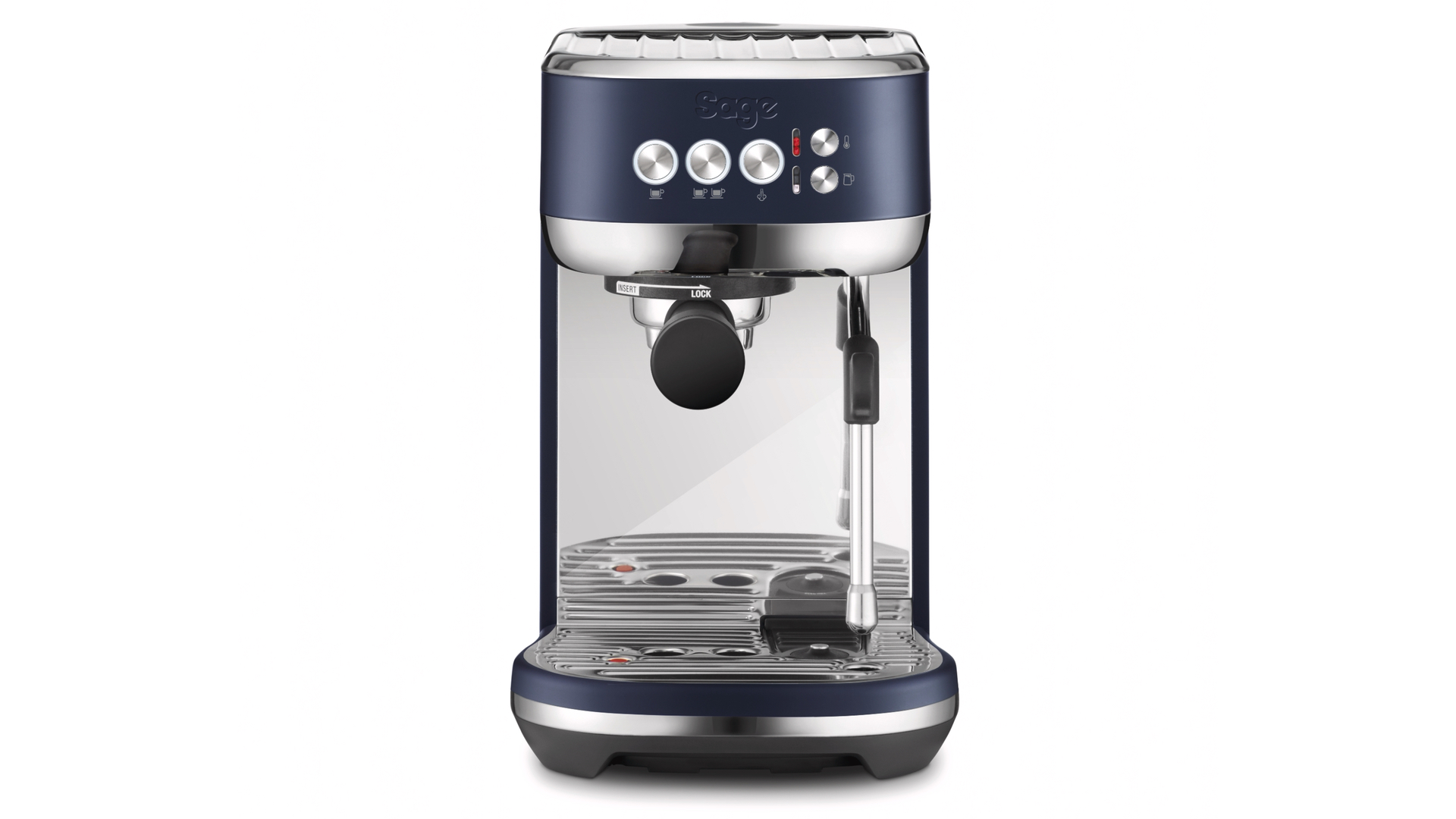
Sage/Breville produces a range of very efficient small home appliances that generally cost a bit more but only because they’re invariably better built. Like this stonking little espresso maker. Alright, it’s not that little but at 32 x 31 x 20cm, it’s certainly more petite than many of its competitors and a fraction of the size of a monstrous bean-to-cup machine.
Available in three colour schemes – Black Truffle, Black Stainless Steel and the Brushed Stainless Steel reviewed here – the Bambino Plus contains very little plastic apart from the hidden base, a few parts of its chassis and the extra large transparent 1.9-litre water reservoir with integral filter. That said, despite all the metal, the machine is pretty light in weight which means you may have to hold it in position with one hand while you lock in the heavyweight portafilter.
It’s not a deal breaker by any means but I must say I prefer a machine that has more weight at the bottom so it doesn’t budge at all on the worktop. I can't imagine it would have cost Sage a lot to dump a lump of concrete in the base to weigh it down.
Sage The Bambino Plus review: Features
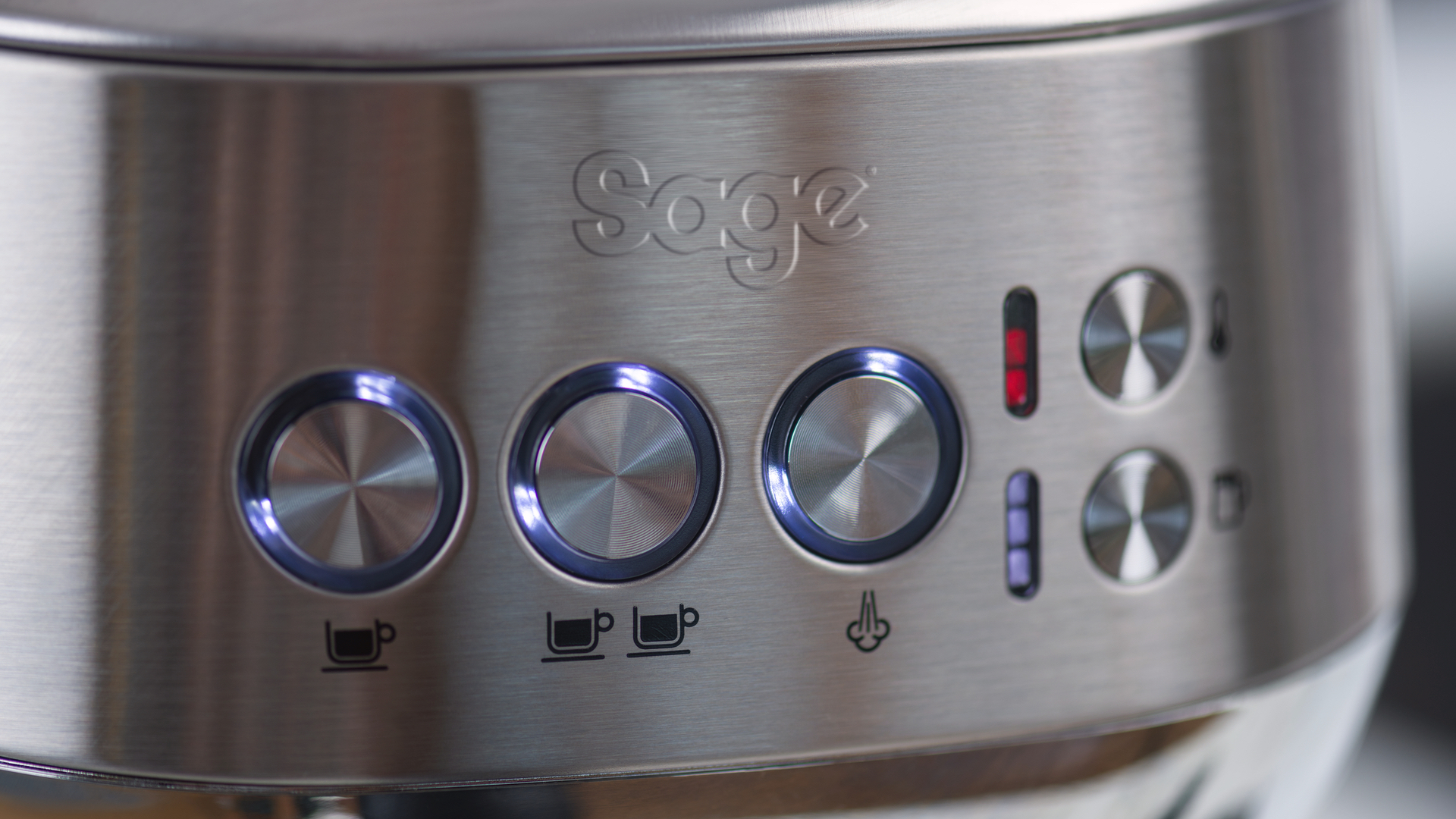
Just three main buttons – what could possibly go wrong?
Manual espresso machines can be notoriously complicated to use but this one does most of the number crunching for you. In essence, it has just two extraction buttons, one for a short and one for a double. The default for the single shot is short, barista short – as in a single mouthful. However, extraction length can easily be customised to suit your size of cups. The same applies to the double shot function.
If you like cappuccinos and lattes, then this is the machine for you. The Bambino Plus’ thermojet-powered steam wand produces one off the silkiest and creamiest micro froths in cappuccino land, and you can set both the temperature of the froth mixture and its consistency from low to high.
Unlike many domestic manual machines which boast 15 bar pressure, this one runs at 9 bars. However, according to my favourite UK-based espresso expert at coffeeblog.co.uk, ‘the marketing blurb of many low cost espresso machines will try to give the impression that higher pressure is better, but this isn't the case at all. Nine bars of pressure is still universally accepted as the perfect pressure for proper extraction’. In fact, ‘ever since the introduction of Gaggia’s espresso machines, 9 bars has been the industry standard for espresso making’. So there you go.
Digital Temperature Control, meanwhile, ensures that the water (93ºC) is expelled at the exact temperature for precise extraction. Although of course, some people think that 91ºC or 92ºC is in fact the 'correct' temperature for espresso, but let's not get bogged down in that, now.
This machine also comes with two sets of unpressurised and pressurised (or dual wall) baskets – two for single shot and two for doubles. Use the dual wall pressurised baskets for pre-ground coffee that isn’t necessarily as finely ground as it should be and the single-wall unpressurised baskets when using a grinder and fresh-roasted beans to produce coffee of powder-like consistency.
For true espresso pedants for whom only the most precise measurements will do (a 19g dose delivered by a commercial style 54mm portafilter), the Bambino plus also ships with a very decent tamper and a tool call The Razor that precisely skims off any excess coffee powder for the perfect dose.
Sage The Bambino Plus review: Performance
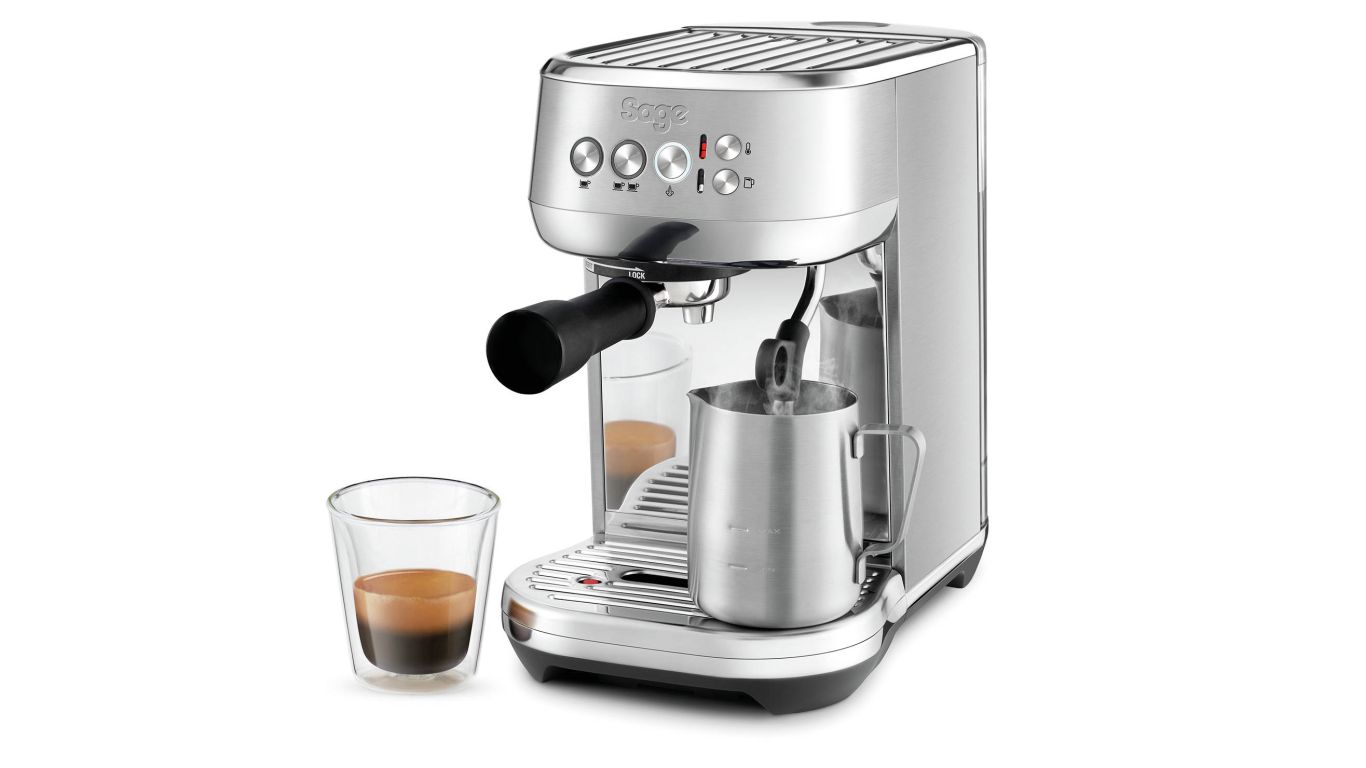
In order to get the most out off this machine, I would advise using a good quality grinder because some pre-ground ‘espresso’ doesn’t have a fine enough grind to produce barista-strength honey-like espresso with a deep, silky crema, even when used with the dual-walled pressurised baskets. If money is no object, then I would recommend the Sage Smart Grinder Pro and if cost is of absolutely zero consequence, then opt for the stupendously excellent barista-spec Niche Zero.
Naturally it helps if you use the best coffee beans you can buy and in this respect I highly recommend anything in the Spiller & Tait range, Union Revelation and good old Lavazza for those emergency ration runs down the local supermarket.
That said, the Bambino Plus also produces very decent results using pre-ground coffee and the dual-walled basket. Whichever method you opt for you’ll find that the extractions are very consistent and much easier to achieve than when using most other standard espresso machines.
I don't drink a lot of milky coffees but if you do, you're in for a treat. The milk frothing system is simply sublime and so easy to use. When set to the highest setting, the froth it produces is of café quality with almost zero detectable bubbles – super creamy and smooth.
Sage The Bambino Plus review: Verdict
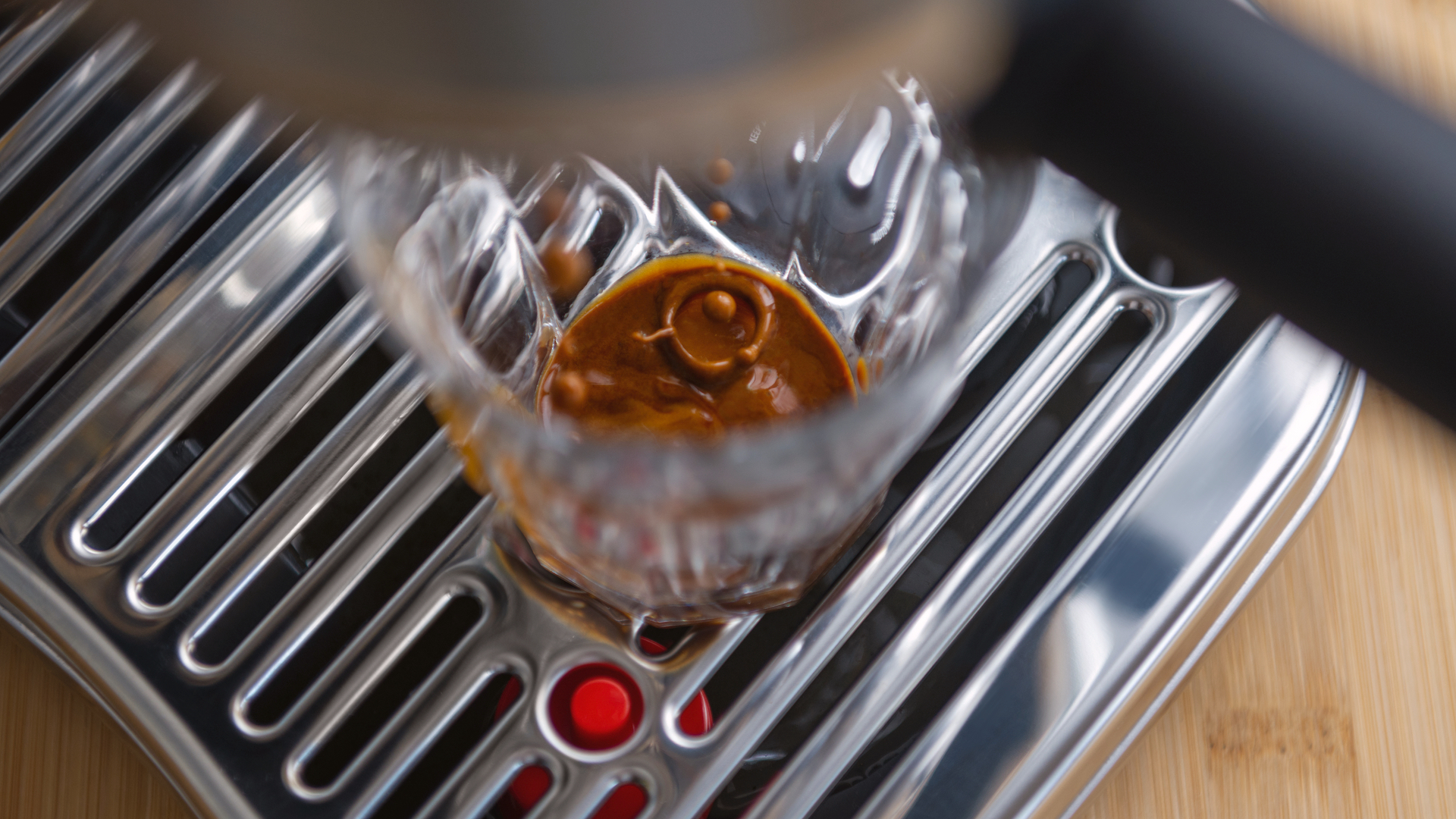
Manual espresso machines can cost a mighty wad to buy but the Bambino Plus is arguably the best model in its price range and certainly one of the easiest to use. Not only does this all-metal model produce exquisite espressos, cappuccinos and lattes, it also looks extremely stylish – and without taking up too much worktop space.
Probably the best machine of its type, Sage The Bambino Plus comes warmly (93ºC) recommended.
Sign up to the T3 newsletter for smarter living straight to your inbox
Get all the latest news, reviews, deals and buying guides on gorgeous tech, home and active products from the T3 experts
Derek (aka Delbert, Delvis, Delphinium, Delboy etc) specialises in home and outdoor wares, from coffee machines, white appliances and vacs to drones, garden gear and BBQs. He has been writing for more years than anyone can remember, starting at the legendary Time Out magazine – the original, London version – on a typewriter! He now writes for T3 between playing drums with his bandmates in Red Box (redboxmusic).
-
 Warning: Ciele’s refreshed Elite Collection may cause excessive garment envy on race day
Warning: Ciele’s refreshed Elite Collection may cause excessive garment envy on race dayFlex on your run crew with Ciele’s latest drop
By Matt Kollat Published
-
 Smeg adds a touch of navy sophistication to its iconic breakfast set
Smeg adds a touch of navy sophistication to its iconic breakfast setIt's a minimalist's dream
By Lizzie Wilmot Published
-
 My most anticipated Netflix movie of the year gets a wild new trailer
My most anticipated Netflix movie of the year gets a wild new trailerHavoc looks pretty unbelievable
By Max Freeman-Mills Published